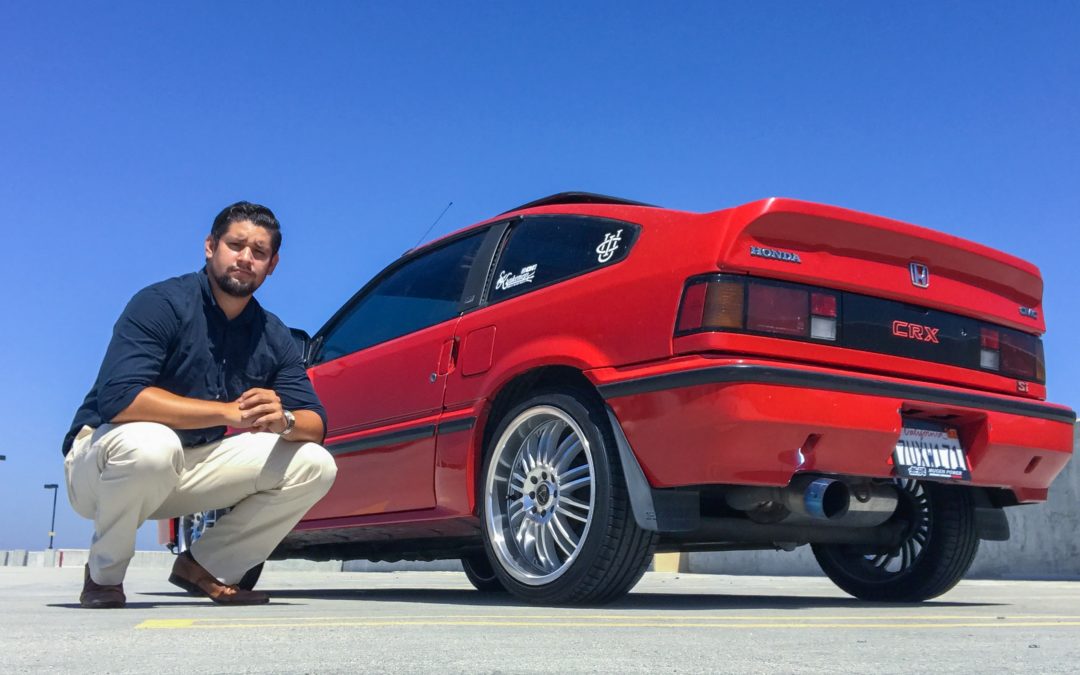First in a series of posts following up with Base 11 Victory Circle students
By Christine Byrd, Communications Director
Francisco Gomez’s dad, grandfather, and great-grandfather were all carpenters. He learned the value of hard work getting paid a $1 an hour in the summers helping out his dad. And he watched in awe as his dad brought families’ dream kitchens to life with his bare hands.
As an engineering student, Gomez found himself wondering how to combine the artisanship, entrepreneurialism, and work ethic that he learned from his family, with engineering skills and 21st-century manufacturing technology that are central to the 21st century.
“From the time we met Francisco as a community college student in East LA, we knew he had something special,” says Landon Taylor, CEO of Base 11. “We’ve been supporting him and following him along the way, and we are excited to celebrate his success in the Base 11 Victory Circle.”
All of Base 11’s programs focus on accelerating students on a pathway to the Victory Circle, which means achieving a four-year STEM degree, landing a well-paid STEM job, or launching a STEM-related business. Ever the overachiever, Francisco has already achieved one of these milestones and is about to conquer a second.
He went to East LA College, where he first encountered Base 11 and applied for the Base 11 Summer Fellowship at the University of Southern California, where he worked under the mentorship of USC graduate students on aerospace engineering.
“It was exhilarating,” says Francisco, “and I was exposed to stuff I never thought I’d be exposed to.” At the same time, it was also intimidating. Gomez had been rejected when he applied to attend USC as an undergraduate, which made it even more surreal to be on campus as a community college student, getting to work on projects that most undergraduates will not even get exposure to.
Balancing his own schedule and conducting research at the library to fill in gaps in his knowledge, Francisco ran experiments in small aircraft wings in the wind tunnel, recording and analyzing data, and producing new scientific knowledge. “For the first time, I was able to take so much pride and ownership in a project,” says Gomez. “I realized how ambitious I could be when I like a subject.”
After he finished the Base 11 Summer Fellowship at USC, he transferred to the University of California, Irvine to finish his bachelor’s in mechanical engineering. The next summer, he landed an internship at the engine manufacturer Cummins, Inc. in Indiana. There, for the first time, he was able to apply his engineering skills to the automotive industry, and understand horsepower and car efficiency. He came home, reveling in his growing engineering skills, but wondering how to combine that with the business-savvy he had nursed since he was a child.
“At an early age, I was always looking to see what my next venture was,” he says. In first grade, after Lance Armstrong won the Tour de France and LIVESTRONG wristbands were rising in popularity, Gomez bought bagfuls of the yellow wristbands and resold them to his classmates. In middle school, he turned to selling snacks on campus. He laughs, “I think I sold more snacks than the school did!”
While Gomez tinkered with his own car – a 1987 Honda CRX — he turned over ideas in his head, pondering how he could combine his experiences into a business that would delight customers as much as his father’s custom cabinetry
Gomez was frustrated with how much modern technology had complicated cars, making it nearly impossible to make your own custom improvements. So Gomez leveraged that nostalgia to launch a custom automotive business, Kraken Engine Performance. “I want to take advantage of technology while maximizing simplicity for auto parts,” he says.
Already, Gomez has designed 10 parts, using computer-aided design and 3D printed models, and he plans to outsource the manufacturing to machinists, while personally running data analysis on the parts to demonstrate their effectiveness.
“So many companies focus only on making their cars efficient and fast, but I want to talk to the customer about what their goal is, and build the right car for them,” he says.
Gomez dug into books about entrepreneurship, including the Entrepreneur Rollercoaster, by Darren Hardy. The book is one of the cornerstones of the Base 11 STEM Entrepreneur Program, which Gomez has also leveraged in self-study. (Although the program was intended to be taught in a classroom, Gomez and all Base 11 alumni have access to it as a benefit.)
Hardy’s book prepared him for the fact that those who know and love him the most, might not be the most supportive of his entrepreneurial endeavors. His family, for example, thinks he is overambitious and overly optimistic. “I know that I want to see a company grow from the bottom up, and see a community that I manifest,” says Gomez. “I want to leave a mark that I made on my own.”
As Gomez leads the march to the Victory Circle and the promising future beyond, we cannot help but be inspired.
“I know what I’m capable of, and even though everyone else might not see it, I’ve got to keep going,” says Gomez. “The fact is that I could achieve anything if I really wanted to.”

